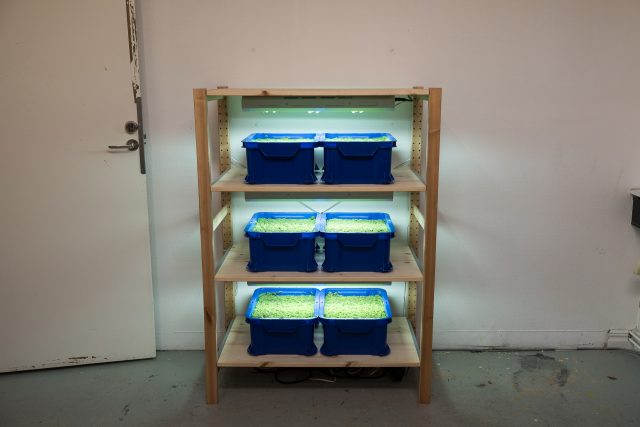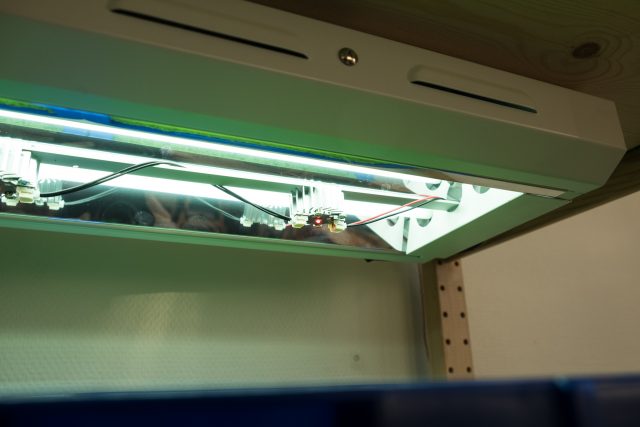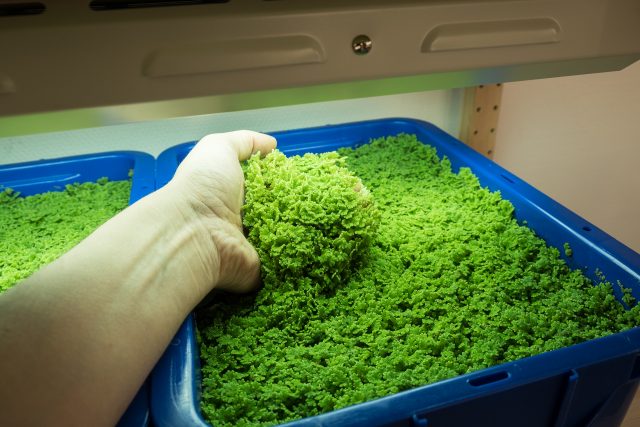
[Azolla cultivation at Slakthusateljéerna 2018.]
While the Azolla cultivation at Hauser & Wirth in Somerset haven’t been doing that well lately, the cultivation at Slakthusateljéerna seen above has made some promising progress.
Just as in Somerset these Azolla cultivations are grown under fluorescent grow lights in a synthetic nutrient solution which provides the basic nutrients and trace elements that Azolla needs. This has been working well for some months now. However, the addition of far red LEDs (730nm) to the fluorescent (T5) grow lights have recently improved the Azolla growth further.
Far red light is needed for the “Emerson Effect”, an increase in the rate of photosynthesis that happens when plants are simultaneously exposed to red light (630 – 690 nm) and far red light (690-760 nm). The simultaneous exposure to red and far red light causes the rate of photosynthesis, and thus plant growth, to be much higher than the sum of the red and far red photosynthesis rates individually.
Far red light also trigger the “shade-avoidance response” in plants. The amount of far red is about the same as red light in sunlight, but the percentage of far red light increases as red light is absorbed by leaves when sunlight is filtered through green leaves. As plants sense the change in light composition they take various measures to avoid being shaded by other plants. Because of this adding far red light promotes stem elongation and stretching in plants, and increases leaf size.
Finally, adding far red for a short duration in the evening simulates the setting sun, as the setting sun is skewed by the atmosphere to show more far red than other spectra in the evening. Plants have circadian rhythms (day and night rhythms) and simulating changes in sunlight can provide important cues for plants that enable them to follow healthy rhythms and thus promote growth under artificial light.

[Far red LED in Azolla cultivation at Slakthusateljéerna 2018.]
The far red LEDs in this installation are currently running for the full 16 hours the fluorescents are on. However, sometimes adding just 15 minutes of far red after the other lights are shut off in the evening is supposedly enough for a noticeable effect on plant growth.

[Azolla in cultivation at Slakthusateljéerna 2018.]
After just a couple of days of exposure to far red light it is clear that it has a noticeable effect on Azolla growth, as well as on the color and the elongation of Azolla fronds. During the coming months I will continue to try the supplemental far red LEDs with different durations and intensity.